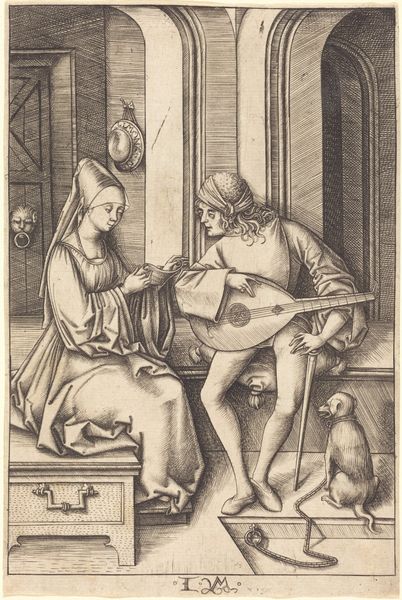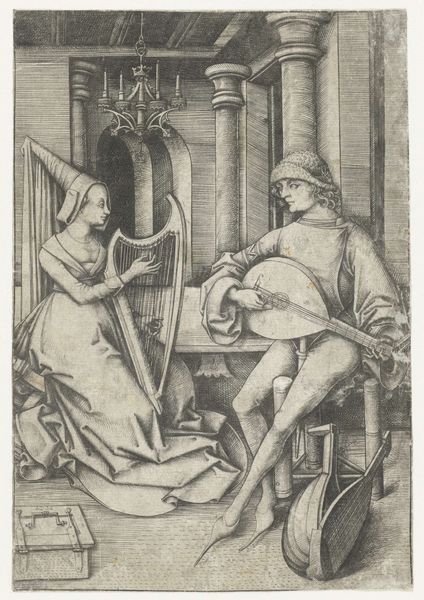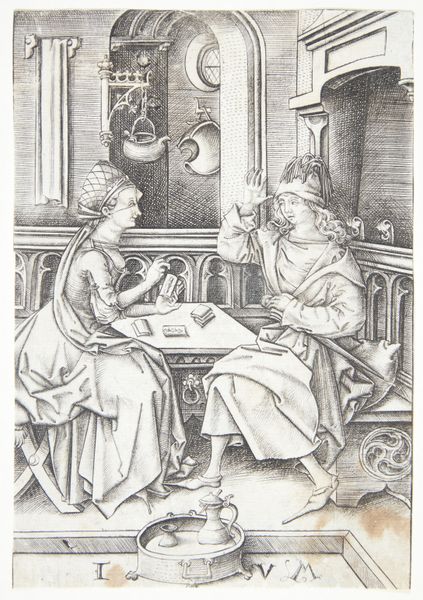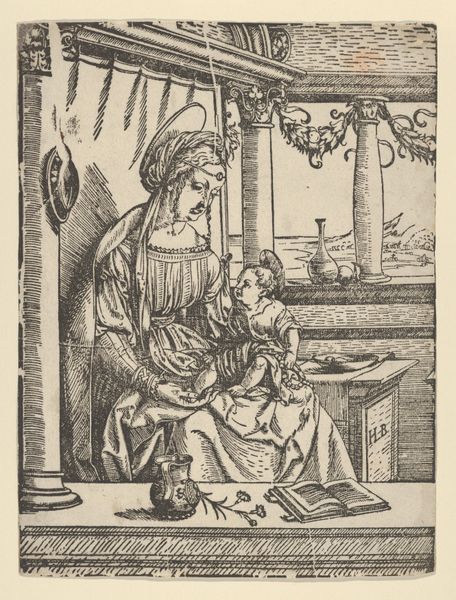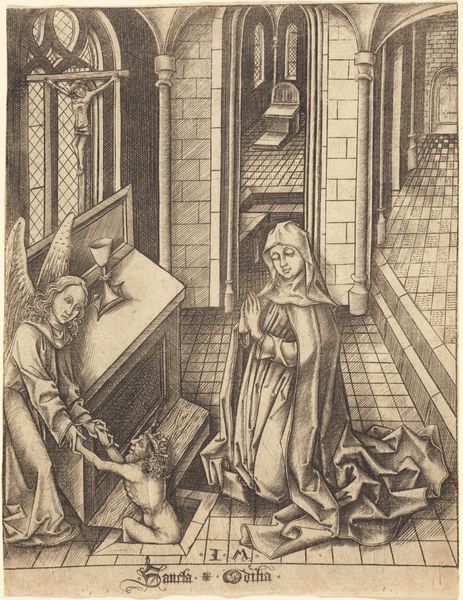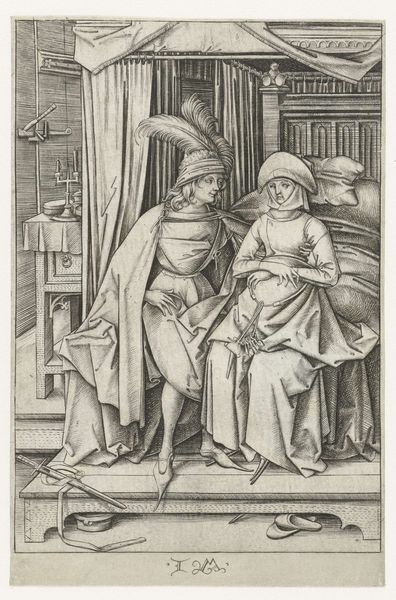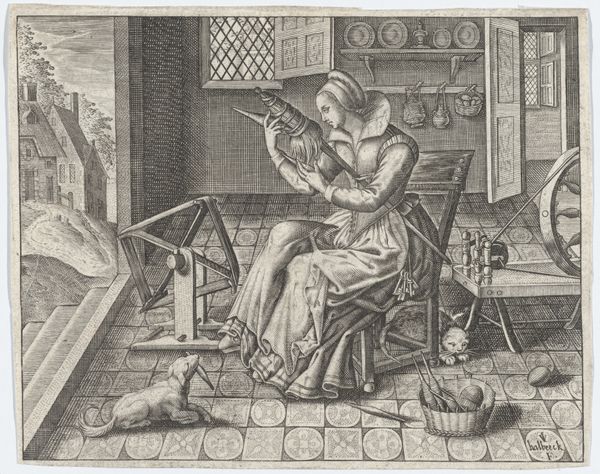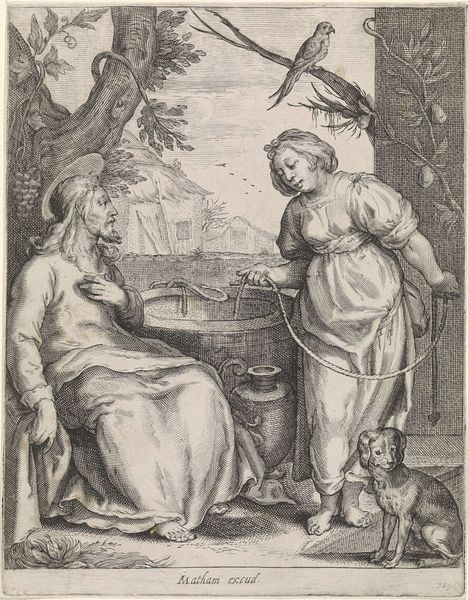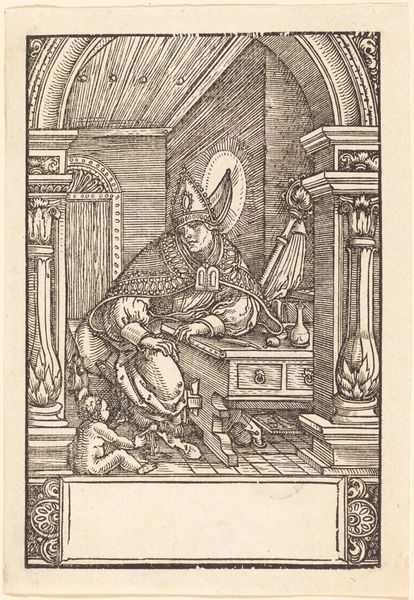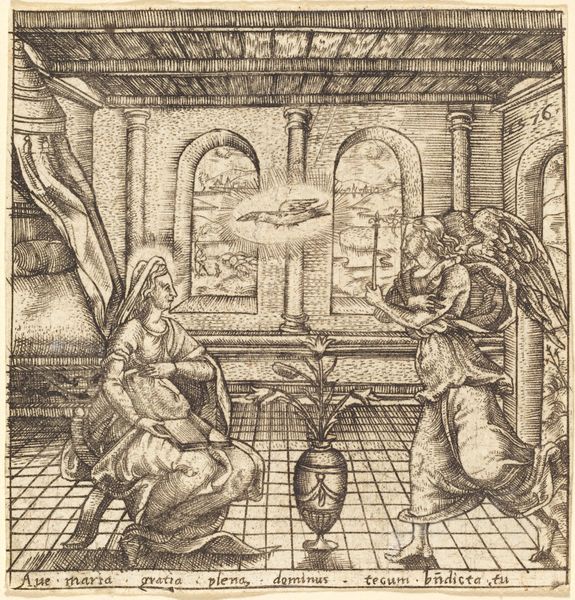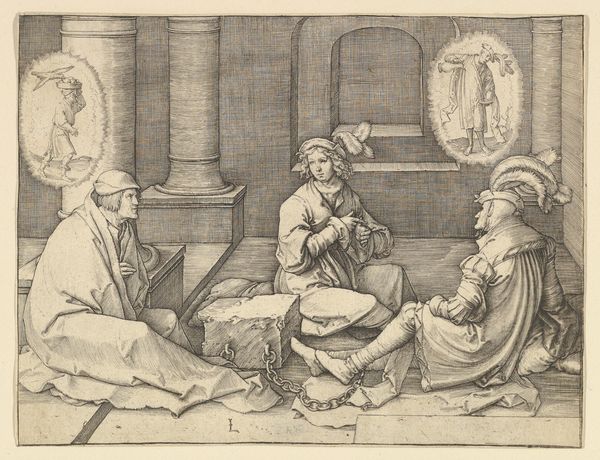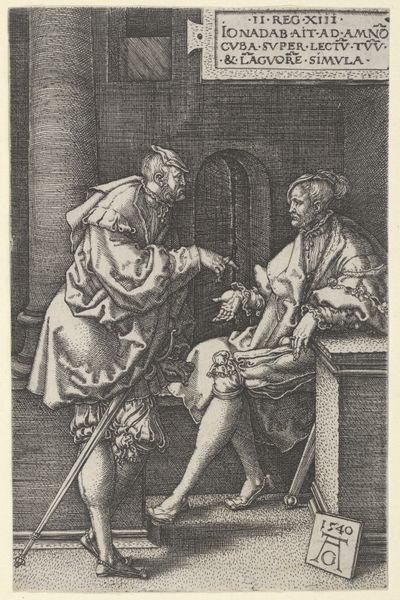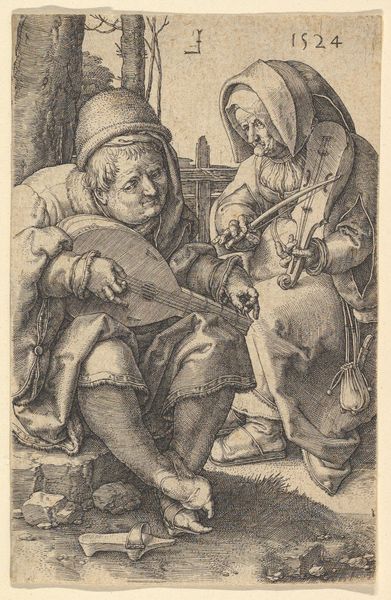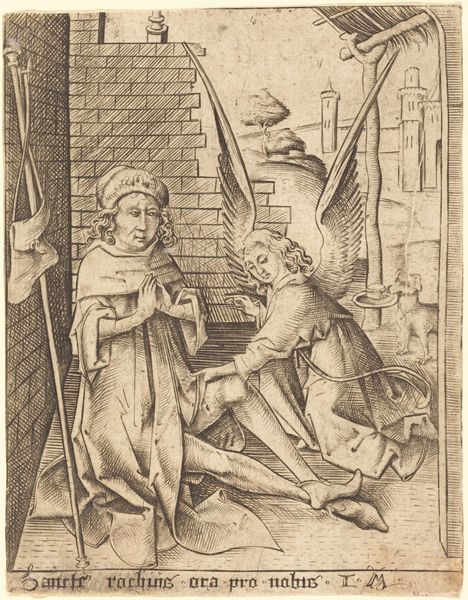
drawing, print, paper, engraving
#
portrait
#
drawing
# print
#
paper
#
genre-painting
#
northern-renaissance
#
engraving
Dimensions: 155 × 107 mm
Copyright: Public Domain
Curator: So, Israhel van Meckenem’s engraving, "The Singer and the Lute Player," circa 1495, made with engraving on paper, feels so intimate, like we're eavesdropping on a private moment. What strikes you most about it? Editor: I’m really drawn to the detail of the engraving. You can practically feel the texture of their clothes and the lute. I wonder about the production process—how would that level of detail be achieved back then? Curator: Precisely. The intense labor required for such fine engraving highlights the value placed on craftsmanship at the time. This wasn’t mass-produced; it was painstaking work. Consider, too, that the materials themselves—metal for the plates, fine paper—would have signified a certain level of wealth and patronage. What impact would prints like this have on the circulation of art, compared to painting or sculpture? Editor: I hadn't considered the materials as indicators of economic factors. So the ability to own this kind of print, even in multiples, would be different to having a painting commissioned? This method seems to allow wider accessibility. It really democratises the access to images. Curator: Exactly. The accessibility is also impacted by the portability of these printed images. Do you think this changed how people interacted with art? Perhaps they weren't reserved for the very wealthy as paintings would have been, enabling wider viewership across class. Also, prints often served as source material for other artisans. This particular print perhaps influenced clothing styles, interior decor... things like that? Editor: So this print wasn't just an image to be looked at but it also had wider implications on the culture, even trickling down into everyday materials? Curator: Yes, by considering its materiality, mode of production, and circulation, we get a far richer understanding of its social impact than simply focusing on iconography or artistic merit alone. Editor: I’ve learned so much today. I’ll never look at a print the same way again! Curator: The possibilities of interrogating the social life of things opens new ways to appreciate them, and that is the best takeaway, I believe.
Comments
No comments
Be the first to comment and join the conversation on the ultimate creative platform.
